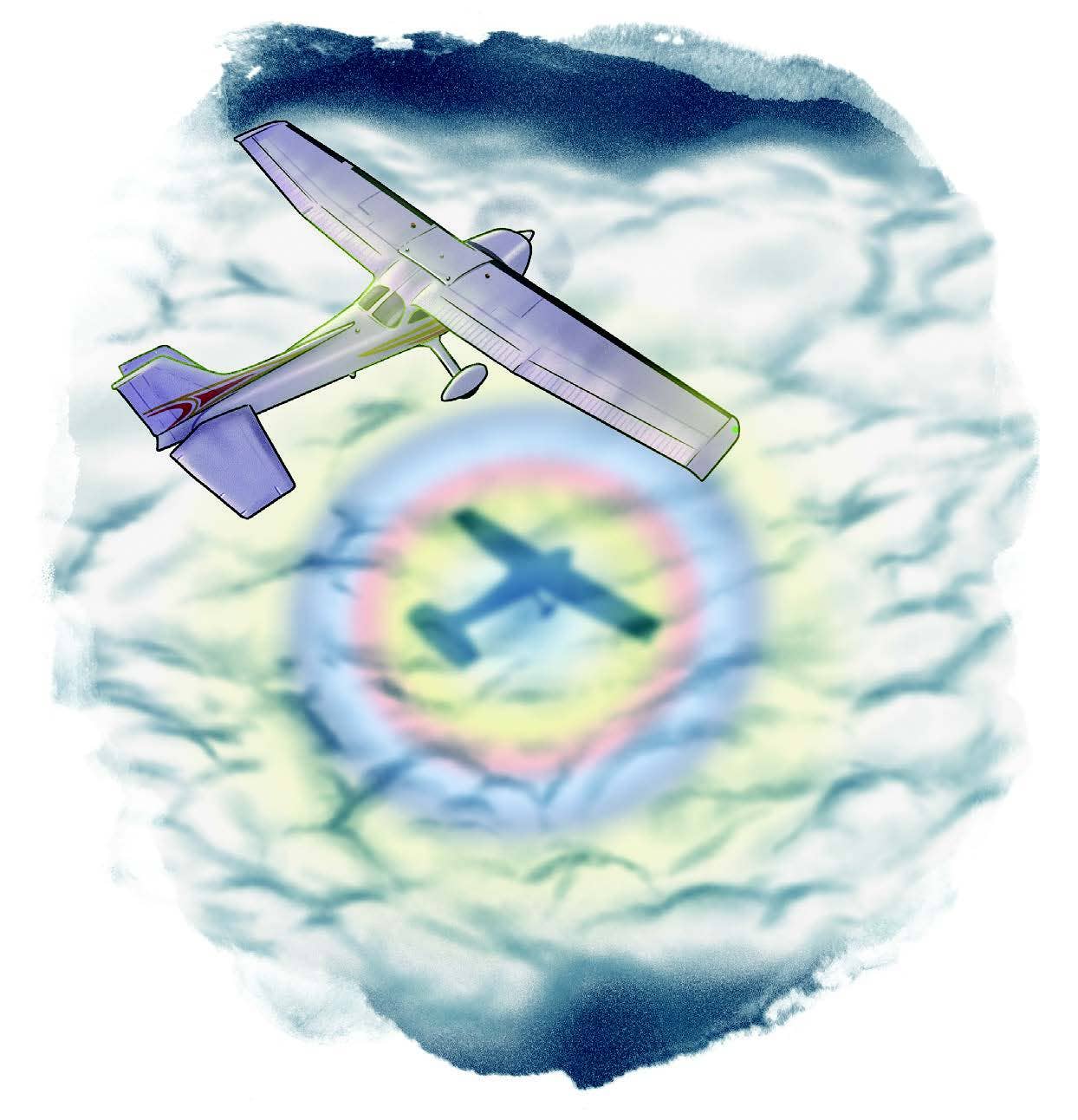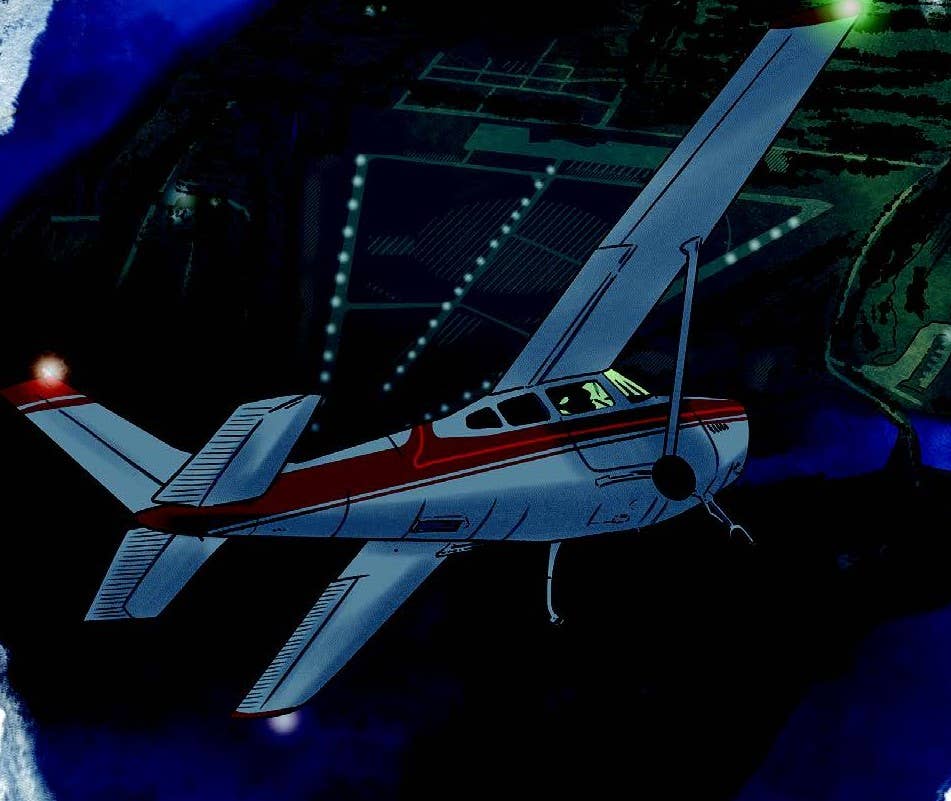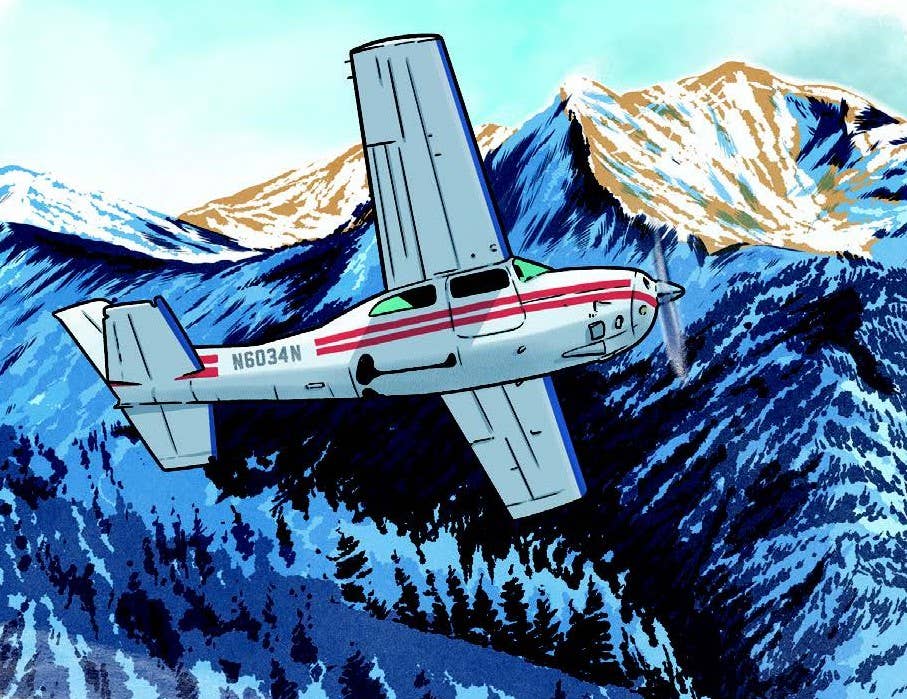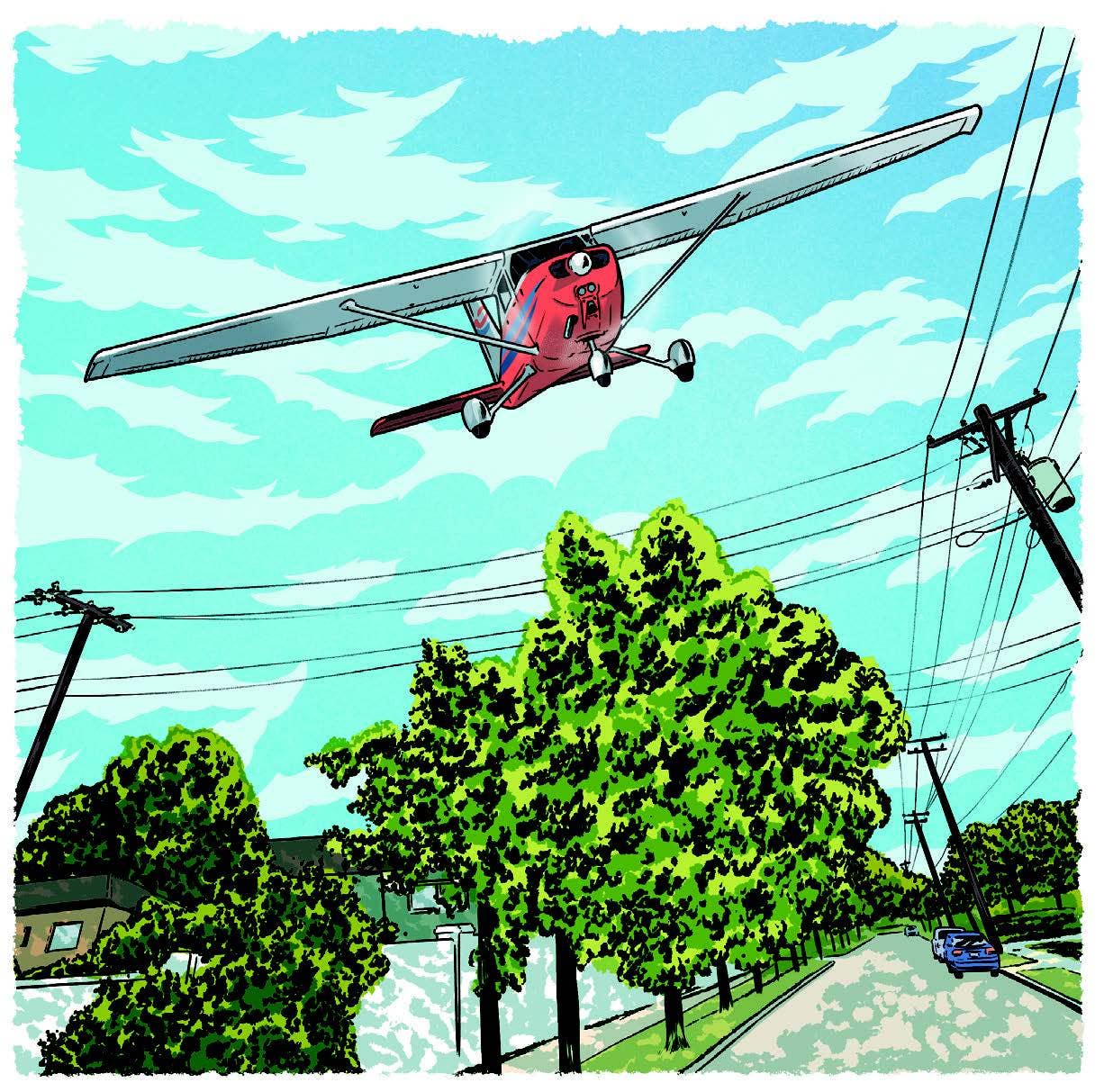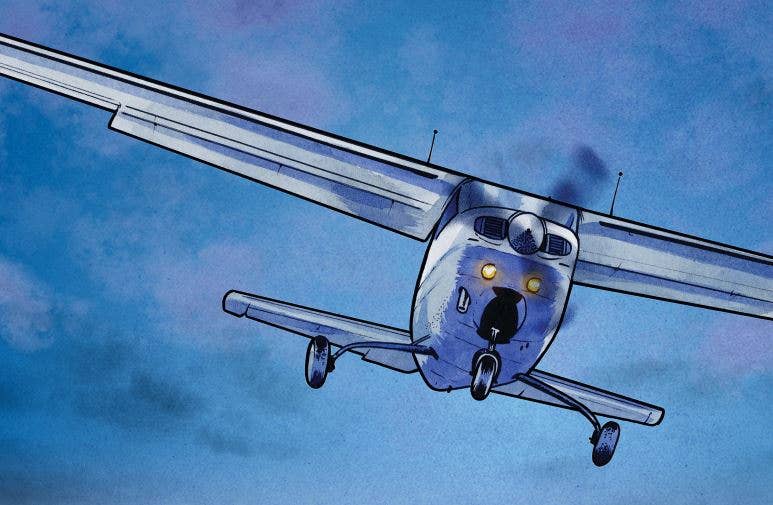
[Illustration by Joel Kimmel]
Oh, those early flying years—making no money to speak of but being a commercial pilot flying for a living. Troubles seemed so far away. I had my first job after graduating college as a flight instructor in Indianapolis. Life was grand, what could go wrong? I was married to a registered nurse who could support us, and I could go flying every day.
It was a beautiful Indiana winter morning in 1973. What a great opportunity. One of my instrument students owned his own aircraft, a Cessna 210, and was letting me borrow it for fuel to take a quick two-day vacation to Disney World in Florida. My wife and I were so excited. We’d been married for not quite two years, with no children yet—three to come later—and we were inviting our chief of maintenance, Jerry, his wife and their two small children to go with us.
All six of us packed up and had a wonderful flight down, first to Memphis (KMEM), Tennessee, for fuel, then Daytona Beach (KDAB), Florida, for more before arriving at Orlando Executive Airport (KORL). Mickey Mouse, here we come! Well, after one great day at Disney, it was time to head back to the cold, desolate state of Indiana.
The preflight and engine run-up seemed fine—I mean after all, I had the chief of maintenance with me. We both noticed what looked like a flutter on the oil-pressure gauge, but good pressure registered on the gauge.
Takeoff was smooth—the night air crisp and clear—and we were off for Chattanooga (KCHA), Tennessee, for our first fuel stop. I’d filed an instrument flight plan and all was going well, yet it still seemed like there was a flutter on the oil-pressure gauge. The engine was running smoothly, but Jerry and I both decided to stop before the Smoky Mountains and check into this in more detail.
“We both noticed what looked like a flutter on the oil-pressure gauge, but good pressure registered on the gauge.”
I was about to change our destination with Atlanta Center when it happened. The engine just sputtered and stopped. I called ATC to report our problem, and when restart was futile, I announced to the controller that I had lost my engine and wanted to spiral down to whatever this airport was that I saw below me.
I'll never forget the next two broadcasts from the controller: First, “I understand you lost your No. 1 engine?”
I reply, “No, I lost the engine.”
“Oh, you’re cleared to do whatever you want. Let me know how it turns out!”
Fun aside now. I’d trained hundreds of students in engine-out procedures in single-engine airplanes. Set up best glide speed, select the best landing spot. Things were a little more difficult than with my students though. It was night, I was in a retractable-gear aircraft that uses the engine-driven hydraulic pump to operate the four gear doors and the gear itself—and I had my family and another person on board.
You don’t want to get too “dirty” with a lot of drag while gliding, but I wanted to use the windmilling prop to assist in putting down the gear. (No gear-up, dead-stick emergency landing for this pilot that night.)
Well, lo and behold, the gear came down before the slowing airspeed stopped the prop. We spiraled correctly and touched down as if nothing was wrong. We coasted onto the FBO ramp and came to a halt near the fuel pump. “Need some fuel?” asked the lineman scurrying up to help. “No,” I said. “It’s a little more problem than fuel for us tonight.” I later found out that my wife was asleep as we glided down and was awoken by the other woman telling her that she didn’t want my wife to die in her sleep. My wife later admitted she would have rather not been awake during a night crash.
To make this long story short, nothing could be done to determine the fix for the airplane that night. We found out later that the No. 6 cylinder ring had cracked and then broken, causing the loss of all oil pressure. Trying to get home that night is another dreadful story, but we made it after sleeping all night in chairs at the Hartsfield-Jackson Atlanta International Airport. And the airport where we landed? Oh yeah, it was in Eastman, Georgia—you know, of Eastman Kodak Co. fame. Anyway, a new engine was shipped there, and Jerry and I returned a week later to install it and flew home. That too is another story, but I learned about flying from that.
Editor's note: This article originially appeared in the December 2021 issue of FLYING.

Subscribe to Our Newsletter
Get the latest FLYING stories delivered directly to your inbox



